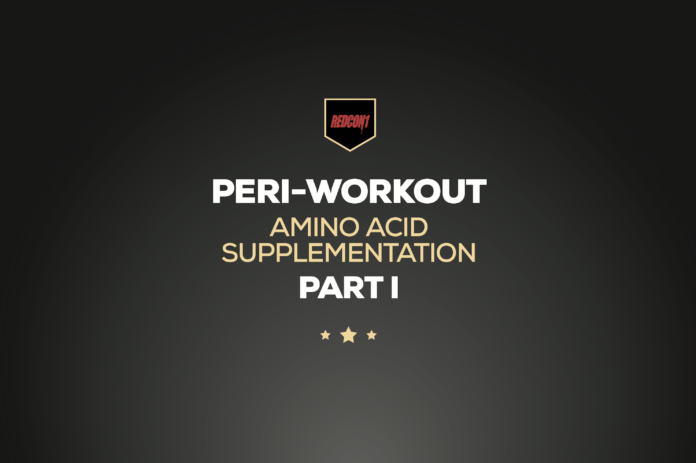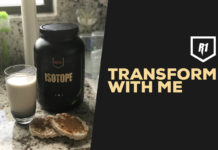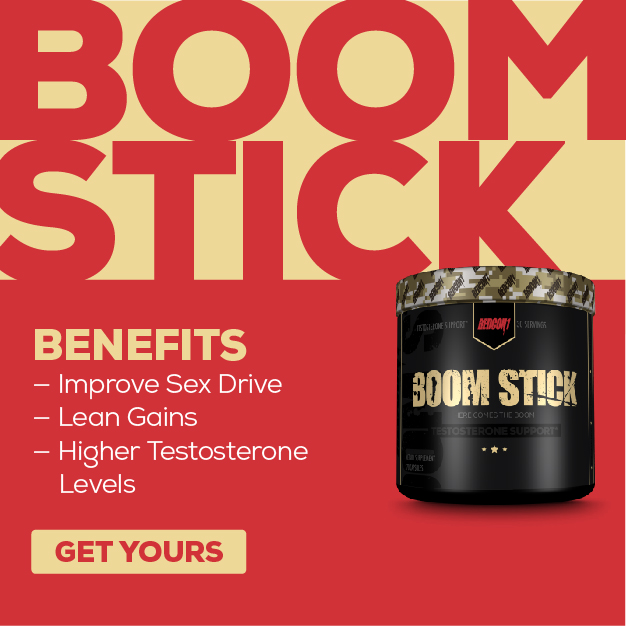
Peri-Workout is what called when referring to the period before (pre), during (intra), and after (post) your resistance training workouts. There is probably more controversy about this time period in regards to nutrient timing, than any other time of the day. In an effort to always bring research to the forefront as a means to broaden your understanding of a certain topic, I would like to discuss the basics of what is going on from a physiological perspective in regards to nutrient timing during this time period as well as what the current literature has to offer us.
Resistance training is essentially a period of time in which you are putting your body under stress in order to force a growth adaptation. This obviously causes muscle damage. It is due to this damage that the remodeling process causes skeletal muscle hypertrophy. This is where many people misunderstand that statement. Many will use simply logic and say “ok if muscle damage equals bigger muscles than more damage equals more size.” This couldn’t be further from the truth as with everything, there are thresholds. Those thresholds have consequences if over-induced chronically. This means the goal of your resistance training sessions should focus on increasing growth via a plethora of methods (mechanical tension, muscle damage, metabolic stress, enhanced innervation, etc) while ensuring that your recovery always outweighs the total damage done. If not, that is when “over-training” can occur and you essentially keep digging yourself into a deeper and deeper ditch that you cannot recover or remodel and grow from, leaving you weaker and smaller than when you originally began. This is where peri-workout amino acid supplementation comes in the equation as the additional “tool” to allow yourself to recover and grow from these intense sessions.
Let us begin looking into nutrient timing first and foremost from a position stand on nutrient timing by The International Society of Sports Nutrition (1.) We will include carbohydrates as well into this part of the article to ensure you have a full understanding of the material during the entire peri-workout timeframe
Summary of pre-exercise nutrient ingestion findings
- Glycogen stores are limited and depend largely on the nutritional status and the intensity and training level of the athlete.
- Endogenous glycogen stores during moderate to high intensity levels (65 – 85% VO2max) of exercise may only last from 90 min to 3 h.
• Exercise intensity, pace and work output decrease as glycogen levels diminish. Depletion of glycogen is associated with increased levels of muscle tissue breakdown and suppression of the immune system.
• Maximal endogenous glycogen stores are best promoted by following a high-glycemic, high-CHO diet (600 – 1000 grams or ~8 – 10 g/kg/d).
• The optimal CHO and PRO content of a pre-exercise meal is dependent upon a number of factors including exercise duration and fitness level, but general guidelines recommend ingestion of 1 – 2 grams CHO/kg and 0.15 – 0.25 grams PRO/kg 3 – 4 hours before competition.
• Pre-exercise ingestion of essential amino acids or PRO alone increases muscle protein synthesis. In addition, ingesting PRO + CHO pre-exercise has been shown to produce significantly greater levels of muscle protein synthesis.
- Regular ingestion of various PRO sources in conjunction with CHO stimulates greater increases in strength and favorably impacts body composition when compared to CHO alone.
Summary of during exercise nutrient findings
- CHO availability during exercise and muscle glycogen levels are major determinants of endurance performance. CHO administration becomes even more important when muscle glycogen levels are low at the onset of exercise.
- As exercise duration increases beyond 60 min, exogenous sources of CHO become important to maintain blood glucose and muscle glycogen stores. This CHO source should supply 30 – 60 grams of CHO per hour and can typically be delivered by drinking 1 – 2 cups of a 6 – 8% CHO solution (8 – 16 fluid ounces) every 10 – 15 minutes.
- Mixing different forms of CHO has been shown to increase muscle CHO oxidation from 1.0 g CHO/min to levels ranging from 1.2 g – 1.75 g CHO/min; an effect which is associated with an improvement in time trial performance.
- Glucose, fructose, sucrose and maltodextrin can be used in combination, but large amounts of fructose are not recommended due to the greater likelihood of gastrointestinal problems.
- The addition of PRO to CHO at a ratio of 3 – 4:1 (CHO: PRO) has been shown to increase endurance performance during both acute exercise and subsequent bouts of endurance exercise.
- Ingesting CHO alone, or in combination with PRO, during resistance exercise increases muscle glycogen stores, offsets muscle damage, and facilitates greater training adaptations after acute and prolonged periods of resistance training.
Summary of post-exercise nutrient ingestion findings
• Post-exercise (within 30 minutes) consumption of CHO at high dosages (8 – 10 g CHO/kg/day) has been shown to stimulate muscle glycogen re-synthesis.
• Adding PRO (0.2 g – 0.5 g PRO/kg/day) to CHO at a ratio of approximately 3: 1 (CHO: PRO) has been shown to stimulate glycogen re-synthesis to a greater extent.
• Post-exercise ingestion (immediately after through 3 hours post) of amino acids, primarily EAAs, have been shown to stimulate robust increases in muscle PRO synthesis. The addition of CHO may increase PRO synthesis even more, while pre-exercise consumption may result in the best response of all.
• During prolonged resistance training, post-exercise consumption of CHO + PRO supplements in varying amounts have been shown to stimulate improvements in strength and body composition when compared to control, placebo, or CHO-only conditions.
- The addition of Cr (0.1 g Cr/kg/day) to a CHO + PRO supplement may facilitate even greater adaptations to resistance training.
Part II will discuss what this means, how to implement it, and what sources are optimal.
READ PART II: HERE
References
1. International Society of Sports Nutrition position stand: nutrient timing. Kerksick, C., et al., J Int Soc Sports Nutr., 2008. (https://jissn.biomedcentral.com/articles/10.1186/1550-2783-5-17)
2. Nutraceutical effects of branched-chain amino acids on skeletal muscle. Shimomura, Y., et al., The Journal of nutrition, (2006.) (http://www.ncbi.nlm.nih.gov/pubmed/16424141)
3. Oral branched-chain amino acids decrease whole-body proteolysis. Ferrando, A.A., et al., JPEN. Journal of parenteral and enteral nutrition, (1995.) (http://www.ncbi.nlm.nih.gov/pubmed/7658600)
4. Rapid aminoacidemia enhances myofibrillar protein synthesis and anabolic intramuscular signaling responses after resistance exercise. West, D.W., et al., The American journal of clinical nutrition, (2011.) (http://www.ncbi.nlm.nih.gov/pubmed/21795443)
5. Ingestion of casein and whey proteins result in muscle anabolism after resistance exercise. Tipton, K.D., et al., Med Sci Sports Exerc, (2004.) (http://www.ncbi.nlm.nih.gov/entrez/query.fcgi?cmd=Retrieve&db=PubMed&dopt=Citation&list_uids=15570142)
6Ingestion of whey hydrolysate, casein, or soy protein isolate: effects on mixed muscle protein synthesis at rest and following resistance exercise in young men. Tang, J.E., et al., J Appl Physiol, (2009.) (http://www.ncbi.nlm.nih.gov/entrez/query.fcgi?cmd=Retrieve&db=PubMed&dopt=Citation&list_uids=1958996)
7. Enhanced amino acid sensitivity of myofbrillar protein synthesis persists for up to 24 h after resistance exercise in young men. Burd, N.A., et al., J Nutr, (2011.) (https://www.ncbi.nlm.nih.gov/pubmed/21289204)
8. Hydrolyzed dietary casein as compared with the intact protein reduces postprandial peripheral, but not whole-body, uptake of nitrogen in humans. Deglaire, A., et al., Am J Clin Nutr, (2009.) (https://www.ncbi.nlm.nih.gov/pubmed/19692493)
9. Ingestion of a protein hydrolysate is accompanied by an accelerated in vivo digestion and absorption rate when compared with its intact protein. Koopman, R., et al., Am J Clin Nutr, (2009.) (https://www.ncbi.nlm.nih.gov/pubmed/19474134)
10. Effect of protein/essential amino acids and resistance training on skeletal muscle hypertrophy: A case for whey protein. Hulmi, J. J., Lockwood, C. M., & Stout, J. R Nutrition & Metabolism. (2010.) (https://www.ncbi.nlm.nih.gov/pmc/articles/PMC2901380/)
11. Essential amino acids are primarily responsible for the amino acid stimulation of muscle protein anabolism in healthy elderly adults. Elena Volpi, Hisamine Kobayashi, Melinda Sheffield-Moore, Bettina Mittendorfer, Robert R Wolfe Am J Clin Nutr. (2011.) (https://www.ncbi.nlm.nih.gov/pubmed/12885705)
12. New therapeutic strategy for amino acid medicine: notable functions of branched chain amino acids as biological regulators. Fumiaki Yoshizawa.J Pharmacol Sci. (2012.) (https://www.ncbi.nlm.nih.gov/pubmed/22293293)
13. Exercise training increases branched-chain oxoacid dehydrogenase kinase content in human skeletal muscle. Krista R. Howarth, Kirsten A. Burgomaster, Stuart M. Phillips, Martin J. Gabala Am J Physiol Regul Integr Comp Physiol. (2007.) (https://www.ncbi.nlm.nih.gov/pubmed/17581840)
14. Leucine stimulates translation initiation in skeletal muscle of postabsorptive rats via a rapamycin-sensitive pathway. J. C. Anthony, F. Yoshizawa, T. G. Anthony, T. C. Vary, L. S. Jefferson, S. R. Kimball. J Nutr. (2000.) (https://www.ncbi.nlm.nih.gov/pubmed/11015466)
15. Rapamycin administration in humans blocks the contraction-induced increase in skeletal muscle protein synthesis. Micah J Drummond, Christopher S Fry, Erin L Glynn, Hans C Dreyer, Shaheen Dhanani, Kyle L Timmerman, Elena Volpi, Blake B Rasmussen. J Physiol. 2009 (https://www.ncbi.nlm.nih.gov/pubmed/19188252)
16. Branched-chain amino acids activate key enzymes in protein synthesis after physical exercise. Eva Blomstrand, Jörgen Eliasson, Håkan K. R. Karlsson, Rickard Köhnke
J Nutr. 2006 Jan (https://www.ncbi.nlm.nih.gov/pubmed/16365096)
17. Dreyer, H. C., Fujita, S., Cadenas, J. G., Chinkes, D. L., Volpi, E., & Rasmussen, B. B. (2006). Resistance exercise increases AMPK activity and reduces 4E-BP1 phosphorylation and protein synthesis in human skeletal muscle. The Journal of Physiology, 2006.
(https://www.ncbi.nlm.nih.gov/pmc/articles/PMC1890364/)
18. Resistance exercise increases muscle protein synthesis and translation of eukaryotic initiation factor 2Bepsilon mRNA in a mammalian target of rapamycin-dependent manner. Neil Kubica, Douglas R. Bolster, Peter A. Farrell, Scot R. Kimball, Leonard S. Jefferson. J Biol Chem. 2005 (https://www.ncbi.nlm.nih.gov/pubmed/15591312)


















